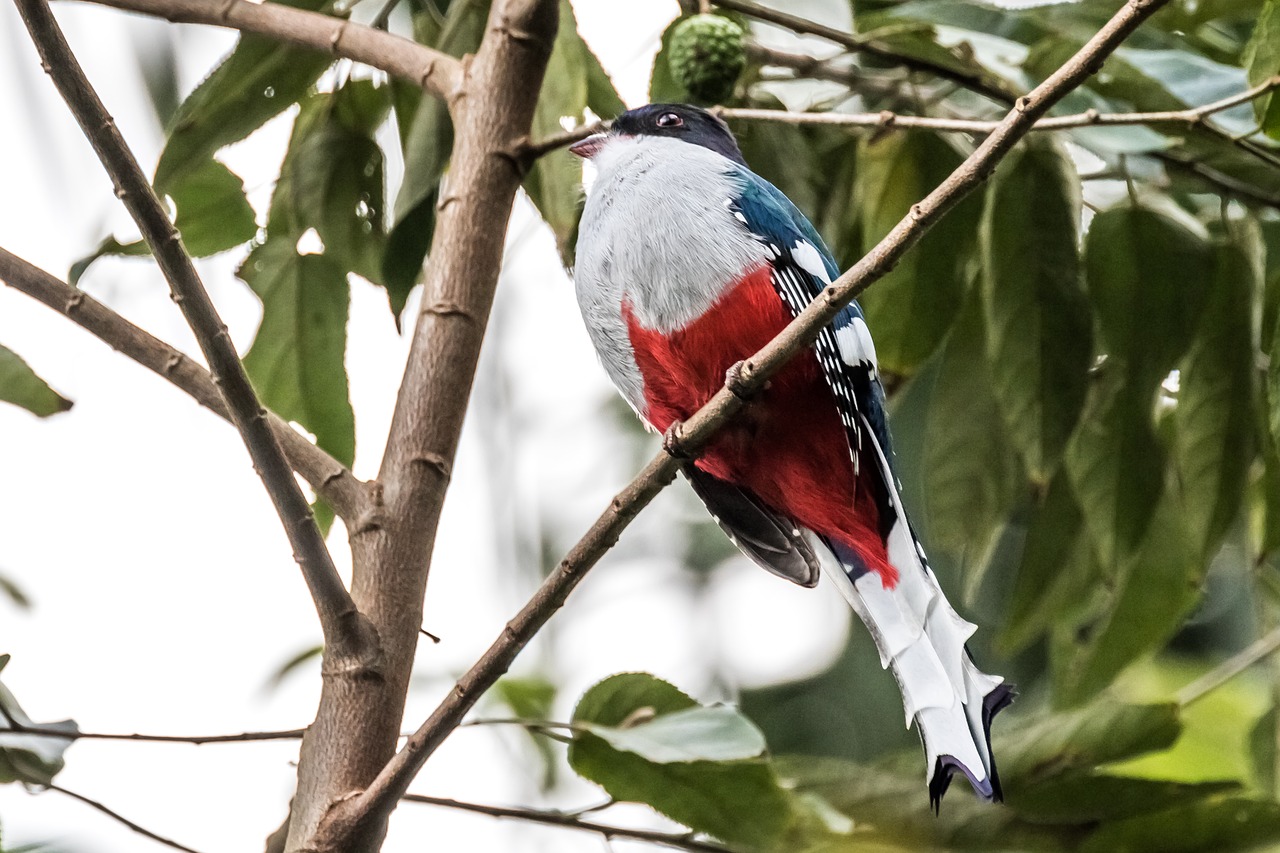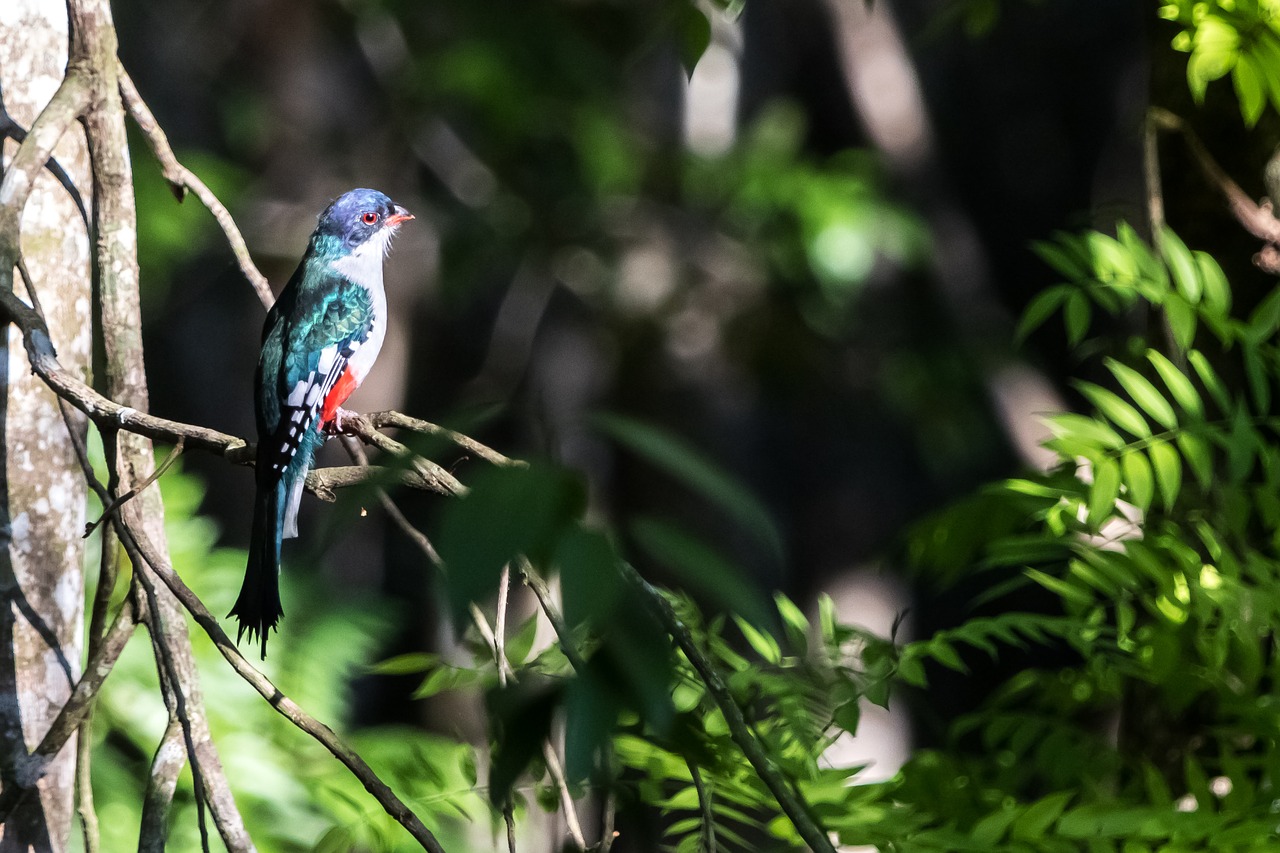
El tocororo it is more than just a bird: it is the national bird of Cuba. This means that it is part of the national symbols of this country together with the butterfly flower, the royal palm or the Cuban flag itself, the popular Demajagua.
The scientific name of this precious animal is Priotelus temnurus and it belongs to the same family as the quetzals. However, on the island it is known as tocororo or also as tocolour. This name derives from the sound of their song, whose onomatopoeia can be reproduced like this: «to-co-ro-ro». In certain parts of the island, especially in the eastern half, it is known by the name of guatini, term of Taino origin.
From an ornithological point of view it is a very interesting species, since it is a endemism. The tocororo only lives in Cuba: on the main island, and some smaller islands such as Guanaja Cay, Isla de la Juventud y Sabinal Cay.
Why is the Tocororo considered the national bird of Cuba? The reasons are two:
On the one hand, its showy plumage has the same colors as the Cuban flag. On the other hand, it so happens that it is not possible to keep this bird in captivity. When a Tocororo is caged, it stops singing, stops eating, loses its precious plumage and is slowly allowed to die. This characteristic was interpreted as a virtue: the Tocororo loves freedom and would represent the free spirit of the Cuban people.
Characteristics of Tocororo
The Tocororo is a medium-sized bird whose height ranges between 27 and 29 centimeters. Its tail is long, measuring practically the same as the rest of the body. With outstretched wings this bird can reach almost 40 centimeters in wingspan.

The colors of the plumage of the Tocororo are similar to those of the flag of Cuba
The Tocororo's tail is made up of long, pointed feathers that make up its end in the shape of a saw. Their eyes are red, while the beak is black at the top and red at the bottom. Their claws are similar to those of the birds of the Trogonidae family
The most striking thing about the physical aspect of Tocororo is its colorful plumage. The top and back of its head are blue-violet, while the back and tail are dark green and shiny. On the other hand, the feathers on the neck and chest are white or pale gray, but the belly and the base of the tail are very bright red. This is the chromatic composition of the plumage of the males. The females can be recognized because their chest is also red, and not white like that of the males. This is practically the only morphological difference between the two sexes.
There are two subspecies from Tocororo in Cuba:
- Priotelus temnurus temnurus, the most common and widespread throughout the island.
- Priotelus temnurus vescus, cataloged for the first time in 1905 and settled only on the Isle of Youth. It is similar to the other subspecies, although its size is somewhat smaller.
Habitat and customs of Tocororo
The Tocororo is present in almost the forests of the whole country, although it is easier to find it in those that are more leafy and that have trees with high crowns. It is most abundant in the eastern half of Cuba: in the Sierra de los Órganos, the Ciénaga de Zapata, the Sierra del Escambray and the mountains of the Sierra Maestra.
It is often said that the Tocororo is a quiet bird. He spends much of the day leaning on a branch, his neck hunched down, dozing. In fact, it only moves to feed itself, that's when it shows that it is capable of fast flights and agile movements. It feeds on fruits and small insects.
Its very characteristic singing (the famous "to-co-ro-ro"), which is usually accompanied by clucking and chirping. In the video from above you can appreciate this peculiar sound.
The breeding habits of this bird are quite curious. The female of the Tocororo lays her eggs between the months of April and July, always in clutches of 3 or 4 eggs. The most striking thing is their habit of laying in other people's nests, generally those of woodpeckers. The eggs are incubated indistinctly by both the male and the female. After birth, the task of feeding the young is also shared between both sexes.
Protection and conservation
The Cuban government approved a law in 1999 that prohibited both hunting and capture of Tocororo. Although the species is not endangered or threatened with extinction, it is considered a protected exotic bird.
In any case, this measure of legal protection is more symbolic than practical, since the Tocororo is one of the most loved and respected animals of the country's fauna. Cubans love Tocororo not only for its beauty and its song, but also for its status as a National Bird, a symbol of Cuban identity. Harming these animals is considered nothing short of an offense to the country.